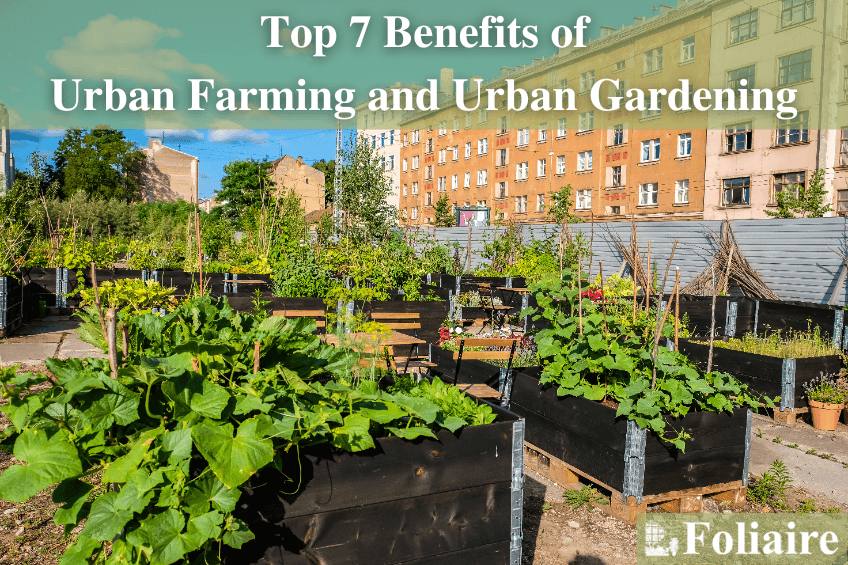Examine This Report on City Blooming
Examine This Report on City Blooming
Blog Article
City Blooming for Dummies
Table of ContentsTop Guidelines Of City BloomingThe City Blooming PDFsCity Blooming Fundamentals ExplainedCity Blooming Things To Know Before You Get ThisRumored Buzz on City Blooming
Fascinated in expanding food for sale in the City of Chicago? Below is a checklist of often asked concerns pertaining to the guidelines and policies that farmers should take into consideration when preparing a city agriculture task.
The zoning modification does not modify any type of other codes taking care of composting, structure licenses, buying or leasing City had building, business licenses or environmental contamination. There are existing codes that control these concerns and they remain completely impact and might apply to your job. Community gardens are generally had or taken care of by public entities, civic companies or community-based organizations and kept by volunteers.
Urban farms grow food that is meant to be sold, either on a not-for-profit or for-profit basis. Due to their business purpose, metropolitan farms need a company permit. Yes. A neighborhood yard is allowed to offer excess produce that was expanded on site if the sales are accessory or subordinate to the garden's key purpose defined above.
The City Blooming Statements
The quantity of compost material can not exceed 25 cubic backyards at any type of given time according to the standards in 7-28-715 of the City's Municipal Code. Because the soil at many new garden websites needs modifying, garden compost, soil, wood chips, or other products can be acquired to construct or enhance the expanding space.

If a building authorization is required after that the hoophouse will be taken into consideration an accessory structure. You can figure out more regarding the building license requirements by calling the Division of Buildings. The 25,000-square-foot size limit is intended to stop a single community garden from dominating a provided block or diminishing the block's existing residential or business character.
The restriction does not put on yards found in Public Open Space (POS) areas. Can there be even more than one neighborhood yard that is 25,000 square feet on a solitary block? Yes. The dimension restriction relates to private yards, not to private blocks. No. Fencing is not called for, however, yards that have huge parking lot might be called for to mount secure fencing or other landscape design features.
Unknown Facts About City Blooming
B1 & B2 districts require that all industrial use tasks be carried out inside your home. R districts restrict industrial task. The policies show the purpose and intent of the Zoning Code. Is fencing needed for metropolitan ranches? Yes. Fences may be required, along with landscaping and testing, for sure car park areas and outside work or storage space areas relying on place and the specific activity occurring.
Urban farms call for structure authorizations and zoning approvals prior to building and construction (urban gardening). Various other forms of city testimonial may be needed depending on particular structures, activities, size, landscape design, licensing, public health and stormwater management concerns.
Yes. The sort of license is determined by what is happening at the website. The Division of Business Matters and Customer Security can aid determine the particular sort of business permit that's required. Yes. Off road parking is needed for most business jobs in Chicago. The required variety of car parking rooms is based upon the number of staff members servicing website and not the square footage of the growing area.
Everything about City Blooming

Yes. A city ranch can offer compost product produced on website, nonetheless, the procedure must follow the policies in 7-28-715 of the Chicago Municipal Code. Yes. Aquaponic systems are permitted indoors on metropolitan ranches in lots of zoning districts. Nevertheless, a zoning review and building license is needed in order to install structures or systems and a business certificate is called for as defined above.
As much as 5 hives or nests of honey bees might be kept as an accessory use. Beekeepers have to sign up with the Illinois Department of Farming. To learn more about the proposed zoning modification you may call the Department of Housing and Economic Development, Bureau of Planning and Zoning at 312.744.8563.
Farming in cities and metropolitan locations A city farm in Chicago. Urban farming refers to various techniques of cultivating. https://www.huntingnet.com/forum/members/cityblooming.html, processing, and distributing food in city locations. The term likewise applies to the area activities of pet husbandry, tank farming, why not look here beekeeping, and cultivation in a city context. Urban agriculture is distinguished from peri-urban agriculture, which takes area in backwoods at the side of suburban areas.
The Facts About City Blooming Revealed
It can entail an activity of natural growers, "foodies" and "locavores", that seek to create social media networks founded on a shared ethos of nature and area holism. These networks can establish by means of official institutional support, ending up being incorporated right into neighborhood town as a "change community" motion for sustainable city development.
Some of the initial proof of urban farming comes from Mesopotamia.
Report this page